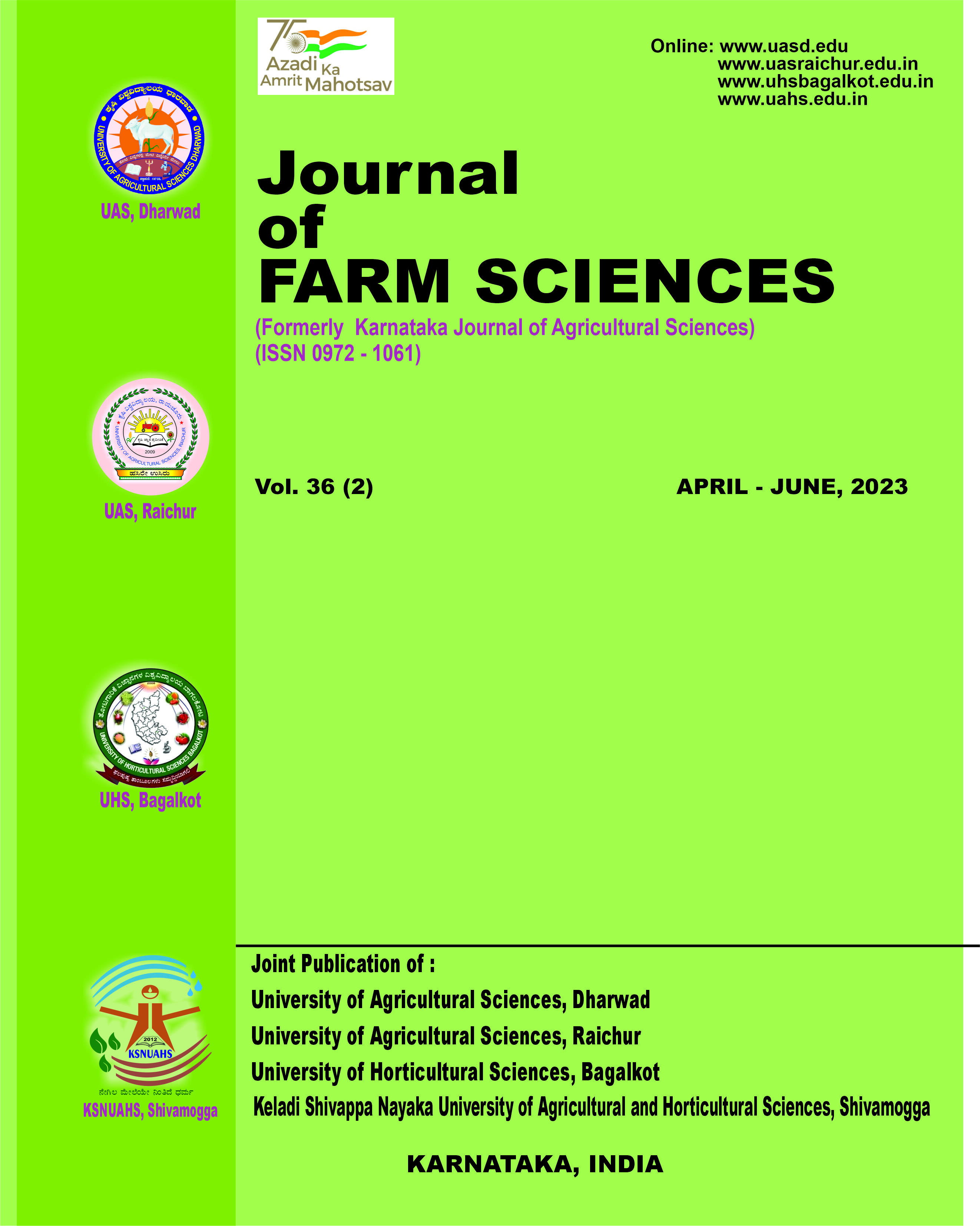Management of mango anthracnose caused by Colletotrichum gloeosporioides (Penz.) Penz.& Sacc.
Keywords:
Anthracnose, Colletotrichum gloeosporioides, Fungicides, Management, Mango
Abstract
Anthracnose is the most significant pre- and post-harvest disease in mango which causes yield losses upto 60 per cent or higher during the heavy rainy season. To assess the effective fungicide for the management, a field experiment was conducted on mango crop at Saidapur Farm, Main Agriculture Research Station, University of Agricultural Sciences, Dharwad during flowering and fruiting season (rabi/summer) of 2021- 22. Two contact fungicides Mancozeb 75% WP and Propineb 70% WP, two combi-products fluopyram 17.7% + tebuconozole 17.7% and carboxin 37.5% + thiram 37.5% and two systemic fungicides propiconazole 25% EC and tebuconozole 25.9% EC were tested. Overall, the results showed that the combination of fluopyram 17.7% + tebuconozole 17.7% at 0.05 per cent concentration significantly reduced the PDI on leaves to 11.83 per cent at 30 days after the third spray, with a reduction of 60.28 per cent compared to control. The next best fungicide was tebuconazole 25.9% EC, at a concentration of 0.025 per cent. It successfully decreased the PDI of leaves to 12.37 per cent at 30 days following the third spray, representing a 58.43 per cent decrease over the control.
Published
2021-03-20
How to Cite
VAMSHIKA, V., KALAPPANAVAR, I., GURUPAD, B., & PATIL, V. (2021). Management of mango anthracnose caused by Colletotrichum gloeosporioides (Penz.) Penz.& Sacc. Journal of Farm Sciences, 36(01), 59-61. https://doi.org/10.61475/jfm.v36i01.351
Section
Research Article
Copyright (c) 2023 Journal of Farm Sciences

This work is licensed under a Creative Commons Attribution-NonCommercial-NoDerivatives 4.0 International License.


